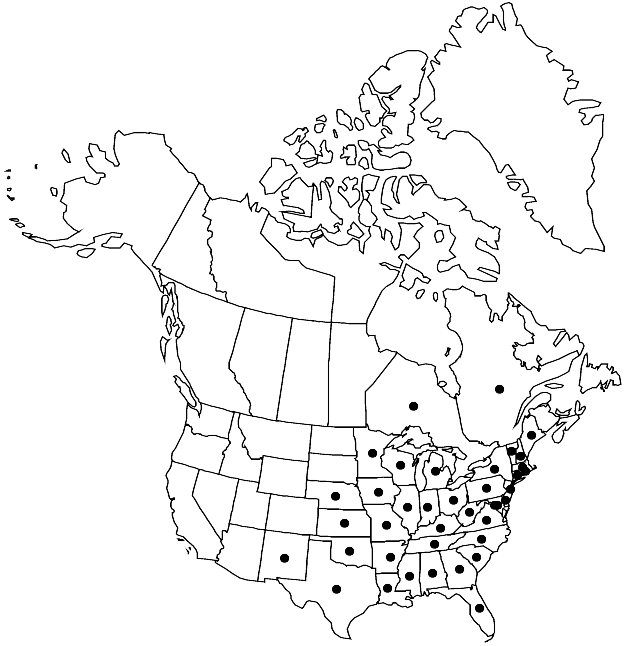Rhynchostegium serrulatum
Ber. Thätigk. St. Gallischen Naturwiss. Ges. 1876 – 77: 370. 1878.
Plants medium-sized to large, in loose tufts, light green to whitish. Stems terete- or occasionally subcomplanate-foliate, branches subcomplanate- to complanate- or rarely terete-foliate; axillary hairs of 3–5 cells. Stem leaves erect-spreading or erectopatent, ovate-lanceolate, often twisted mid leaf, 1.3–2 × 0.6–0.8 mm; margins serrulate to serrate; apex gradually acuminate; costa to 40–70% leaf length, terminal abaxial spine absent; alar cells undifferentiated, or 1–4 cells slightly differentiated, or, rarely, slightly larger cells forming indistinctly differentiated group not reaching margins; laminal cells (50–)80–120(–160) × 7–9(–10) µm; basal cells short-rectangular, region in 1–2(–3) rows, indistinctly differentiated or sometimes forming conspicuous pellucid belt across base. Seta 2–3 cm. Capsule 1.7–2 mm; operculum narrowly long-rostrate. Spores 9–11 µm.
Habitat: Soil in forests, hardwoods, rotten logs, tree bases, rock, grasslands
Elevation: low to high elevations (0-2100 m)
Distribution

Ont., Que., Ala., Ark., Conn., Del., D.C., Fla., Ga., Ill., Ind., Iowa, Kans., Ky., La., Maine, Md., Mass., Mich., Minn., Miss., Mo., Nebr., N.H., N.J., N.Mex., N.Y., N.C., Ohio, Okla., Pa., R.I., S.C., Tenn., Tex., Vt., Va., W.Va., Wis., Mexico, Central America, South America.
Discussion
Rhynchostegium serrulatum can be recognized in the field by its light green color and somewhat complanate foliage. The long leaves with long laminal cells allow rather easy separation from Oxyrrhynchium hians. Sterile collections are sometimes confused with Sciuro-hypnum curtum, but that species usually has conspicuous groups of enlarged alar cells; in R. serrulatum laminal cells are rather homogeneous across the whole base as they are somewhat enlarged and have a specific appearance rather characteristic for this genus. This pattern of leaf base areolation distinguishes R. serrulatum from Brachythecium asperrimum, which is sometimes superficially similar; this Pacific coast species has a small but rather well-differentiated alar group of pellucid cells. In addition, the axillary hairs of R. serrulatum are 3–5-celled, often brownish, while in B. asperrimum they are 2- or 3-celled, short, and pellucid. Rhynchostegium scariosum (Taylor) A. Jaeger from Mexico differs mainly due to its small plants with stem leaves 0.9–1.3 mm; it might be expected in the southeastern United States.
Selected References
None.
